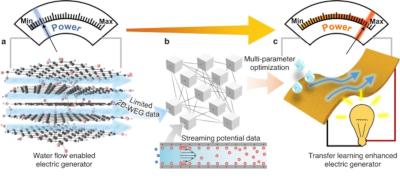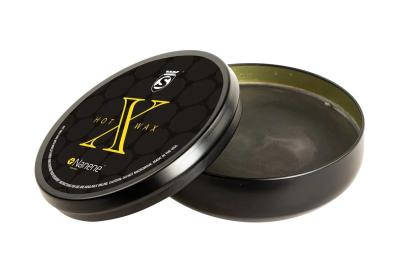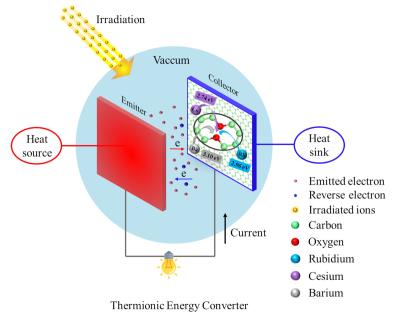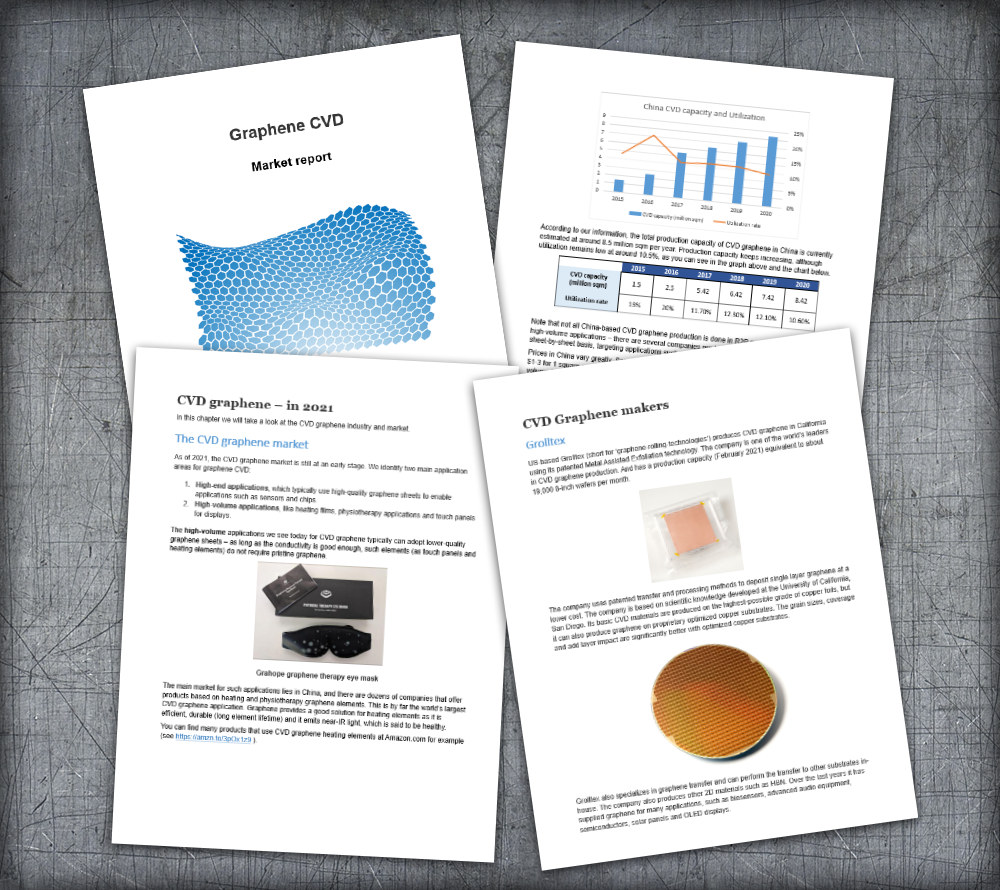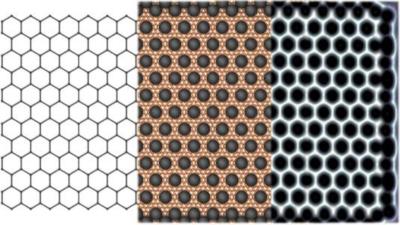The Graphene-Info weekly newsletter
Published: Tue, 11/29/22
The Graphene-Info newsletter (December 2, 2022)
Cannot read this? View it online here
Researchers achieve water-enabled electricity generation through highly oriented graphene oxide nanochannels
Researchers from China's Tsinghua University have constructed highly aligned graphene oxide (GO) nanochannels for sustainable energy production using a freeze-casting process. The new method could address an issue that impedes the generation of electricity from natural water flow through engineered nanochannels, which could become a viable way to cater to the fast-growing renewable power needs.
Large-scale nanochannel integration and the multi-parameter coupling restrictive influence on electric generation currently remain big challenges for macroscale applications, but this novel design encourages spontaneous absorption and directed transfer of water within the nanochannels to generate clean electricity.
Silca launches new bicycle chain lubricant, made with graphene by Versarien
Silca, producer of bicycle accessories, has launched a graphene-based chain lubricant, Hot Wax X. Silca claims it ‘runs roughly 0.5 watts faster’ than their original Secret Chain Blend hot-melt wax, and that it can extend the chain life to 30,000km. The new lubricant comes at quite a high price of £220 per 300g tin.
Silca previously made waves with its Secret Blend Hot Chain Wax, which gained the reputation of 'the fastest lubricant in the world'. Now, Silca found Nanene (by Versarien, which owns the Nanene brand), a commercial type of graphene, to further improve its product.
Researchers study the effects of defects on electron emission of Graphene electrodes
Researchers from the Chinese Academy of Sciences, the University of Science and Technology of China and North China University of Water Resources and Electric Power have studied the effects of irradiation defects on the work function of graphene electrodes in thermionic energy converters (TECs) and found that the generation of defects in graphene through irradiation would increase the work function and reduce the electron emission capacity.
Schematic diagram of a thermionic energy converter. (Image by ZHAO Ming)
Graphene has great potential as an electrode coating material for TECs of the microreactor, which can significantly improve the electron emission ability of electrode. Electrode materials will be exposed to irradiation by high-energy particles during TECs use. Previous studies have shown that the types of defects induced by irradiation in graphene are mainly Stone-Wales defects, doping defects, and carbon vacancies. The appearance of defects will affect the adsorption properties of alkali and alkaline earth metals on the graphene surface in the electrode gap, and then change the electron emission properties of the graphene coating.
Graphene-Info updates its CVD Graphene Market Report
Today we published a new edition of our CVD Graphene Market Report, with all the latest information on this exciting material and market. The CVD graphene market is slowly emerging as applications and projects are growing fast.
Reading this report, you'll learn all about:
- How does CVD graphene differ from other graphene types
- CVD graphene properties
- Possible applications for CVD graphene
- Available materials on the market
The report package also provides:
- A list of prominent CVD graphene research activities
- A list of all CVD graphene developers and their products
- Datasheets and brochures from over 10 different CVD graphene makers
- Free updates for a year
This CVD Graphene market report provides a great introduction to CVD graphene materials and applications, and covers everything you need to know about graphene produced by CVD. This is a great guide for anyone interested in applying CVD graphene in their products, or learning more about this promising new technology.
Researchers develop graphene-enabled single fiber actuator inspired by human muscles
Researchers at the Korea Advanced Institute of Science and Technology (KAIST) and Pusan National University in South Korea recently developed a graphene-enhanced actuator for robotics applications, that is inspired by mammalian skeletal and muscle structures. The new actuator is based on soft fibers with strong contractive actuation properties.
The team explained that they based their work on liquid crystal elastomer (LCE) actuators, promising soft actuator materials with unusually large reversible dimensional change (shrink/relaxation) upon actuation, which is rarely observed in other kinds of actuator materials but highly significant to ideally mimic natural skeletal muscle behavior. Many actuators developed in the past are based on LCE materials, a class of polymers that can rapidly change shape in response to environmental stimuli. Despite their shape-morphing advantages, LCE polymers are known to be associated with the relatively poor mechanical properties and weak actuation behavior. To overcome this limitation, the researchers incorporated graphene fillers within the LCE actuators. In addition to enhancing their mechanical properties, the team expected the graphene fillers to enable light-driven, rapid and remotely controllable actuation, owing to the photothermal conversion capability of graphene.
We released a new edition of our Graphene Batteries Market Report
Today we published a new edition of our Graphene Batteries Market Report, with all the latest information. The batteries market is extremely active, as demand from EVs and mobile applications increases research and development efforts, and graphene is seen as a potential material to increase capacity, decrease charging times and improve other performance metrics. Indeed the new edition contains over 15 new updates, two new covered companies, new projects, research achievements and more.
Reading this report, you'll learn all about:
- The advantages of using graphene in batteries
- The different ways graphene can be used in batteries
- Various types of graphene materials
- What's on the market today
The report package also provides:
- A list of all graphene companies involved with batteries
- Detailed specifications of graphene-enhanced anode materials
- Personal contact details into most graphene developers
- Free updates for a year
This Graphene Batteries market report provides a great introduction to graphene materials used in the batteries market, and covers everything you need to know about graphene in this niche. This is a great guide for anyone involved with the battery market, nanomaterials, electric vehicles and mobile devices.
University of Manchester strikes graphene partnership with Khalifa University
The University of Manchester has entered a partnership with Abu Dhabi-based Khalifa University of Science and Technology, with the aim to deliver a funding boost to graphene innovation. Professor Dame Nancy Rothwell, President & Vice-Chancellor of The University of Manchester, and Professor Sir John O’Reilly, President of Khalifa University officially signed a contract between the two institutions during a VIP visit by a Manchester delegation to the United Arab Emirates (UAE).
This international partnership will further accelerate Manchester and Abu Dhabi’s research and innovation into graphene and other 2D materials. The Research & Innovation Center for Graphene and 2D Materials (RIC-2D), based in Khalifa University, is part of a strategic investment program supported by the Government of Abu Dhabi, UAE. This partnership will expedite the development of the RIC-2D at Khalifa University as well as help building capability in graphene and 2D materials in collaboration with Graphene@Manchester, a community that includes the academic–led National Graphene Institute (NGI) and the commercially-focused Graphene Engineering Innovation Centre (GEIC), a pioneering facility already backed by the Abu Dhabi-based renewable energy company Masdar.
Researchers construct artificial graphene nanoribbons to study behavior of electrons
Scientists at the U.S. Department of Energy’s (DOE) Argonne National Laboratory (ANL) have created a novel testbed to explore the behavior of electrons in a special class of materials called topological insulators, which could see applications in quantum computing.
Left, atomic structure of actual graphene nanoribbon. Middle, CO molecules mapped onto a copper surface to produce graphene structure. Right, scanning tunneling microscope image of the resulting artificial graphene nanoribbon. (Image by Argonne National Laboratory.)
in previous work, graphene nanoribbons — small strips of graphene — were shown to exhibit promising topological states. Inspired by this, the Argonne team constructed an artificial graphene testbed with atomic precision in hopes to further explore those topological effects.
Metalgrass LTD
9 Har Tsin St.
Kfar Sava Hasharon 4430809
ISRAEL
Unsubscribe | Change Subscriber Options


